Tim Doling offers three different one-hour illustrated talks to visiting groups.
Saigon Through the Ages offers a comprehensive introduction to Saigon, its history and built heritage, Exploring Huế introduces the Nguyễn dynasty lords and emperors and the extraordinary architecture of their ancient capital, and The Railways of Việt Nam recounts the fascinating story of Việt Nam’s rail network, most of which was built as a tool of “colonial exploitation” by the French between 1885 and 1936. All of these talks are illustrated by many historic maps and images.
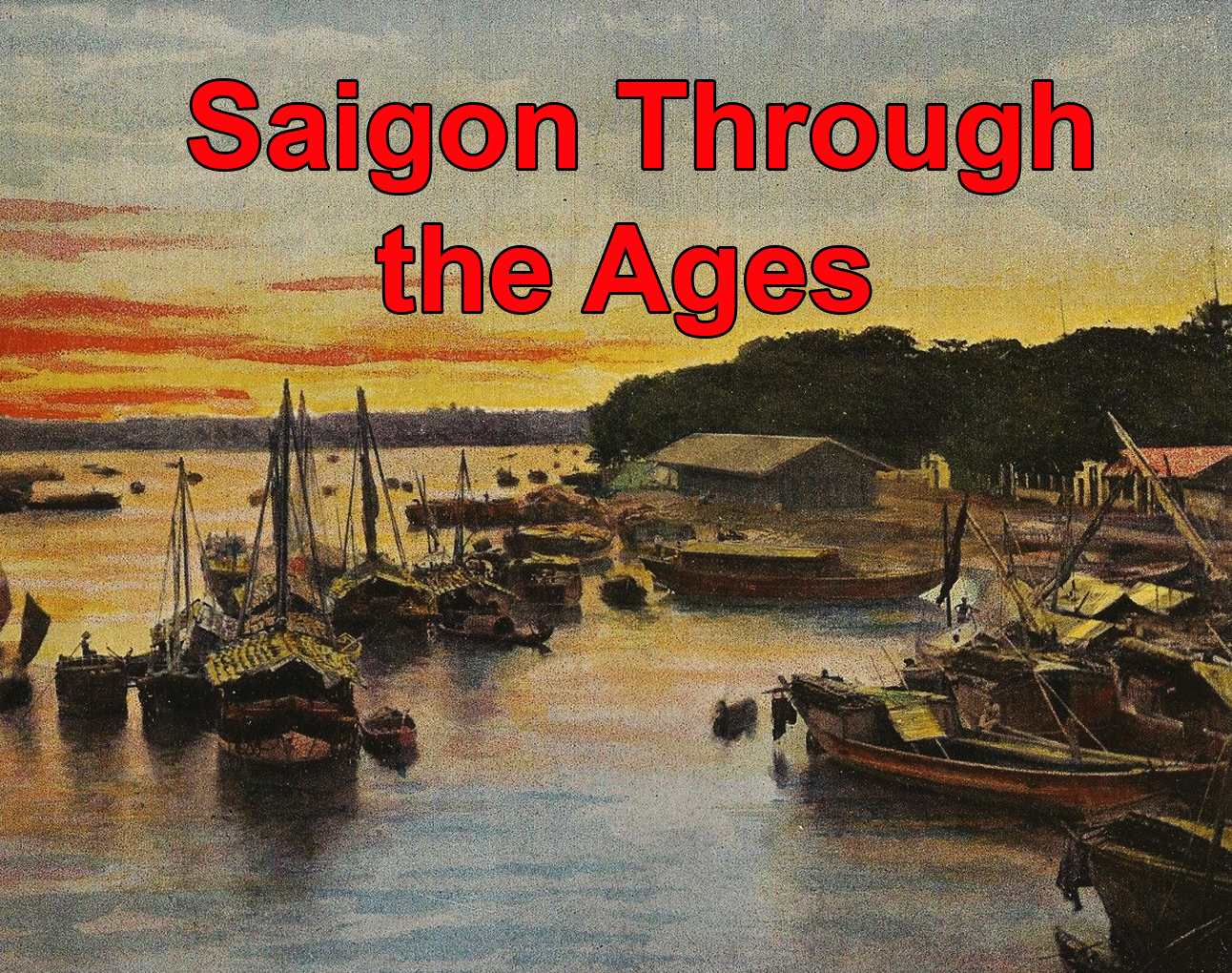
Cochinchine – l’arroyo Chinois à Saïgon
Illustrated by over 150 historic maps and images, the one-hour talk Saigon Through the Ages offers a comprehensive introduction to Saigon, its history and built heritage. As such, it’s the ideal starting point for all visitors to Saigon before they embark on a self-guided or group walking tour of the city.
The talk charts Saigon’s fascinating story, from its earliest days as a remote Khmer outpost and seat of the “Vice King” of Cambodia to its emergence as modern Việt Nam’s economic and financial hub.
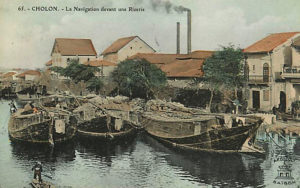
Cochinchine – Cholon – Junks in front of a Rice processing factory
It shows how a shrewd marriage alliance of 1620 enabled the Nguyễn lords of Đàng Trong (Southern Việt Nam) to manipulate the Cambodian royal succession and subsequently to promote successive waves of settlement throughout the Mekong Delta, eventually transforming the entire region into Vietnamese territory by 1770.
It highlights the crucial role played in what the Vietnamese call the Nam Tiến (“March Southward”) by refugee Chinese supporters of the overthrown Ming dynasty, who carved out new territories in the Mekong Delta on behalf of the Nguyễn lords, founded markets and ports, and established a thriving economy based on the shipping and processing of rice. Crucially, it show how these Chinese settlers laid the essential groundwork for Saigon’s development into today’s economic powerhouse by founding its sister-city of Chợ Lớn.
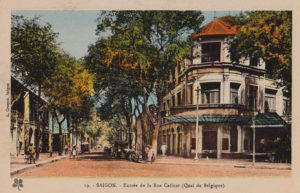
Saigon – Grand Hôtel De La Rotonde
The talk examines the policies of the French colonial authorities, who after 1867 built on the firm economic foundations laid by their Nguyễn predecessors, placing more land under cultivation and facilitating in every way the work of the Chinese merchants, thereby transforming their first colony of Cochinchine and its capital Saigon into a prosperous Far Eastern enclave.
The historical narrative is brought up to date with an overview of the two Indochina Wars, the division of the country from 1955 to 1975 and the reconstruction which has taken place since Reunification in 1975, with a particular focus on the policies of Đổi mới (“Renovation”) which have restored Saigon, now Hồ Chí Minh City, to its former role as a dynamic centre of trade and commerce.
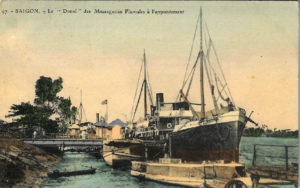
Saigon – Messageries Fluviales de Cochinchine
The talk points out the locations of the two Citadels of 1790 and 1837 and the legacy of these structures on the colonial and modern streetscapes. It also looks in detail at the riverside and “lower town” areas and their significance since the 19th century.
Crucially, it introduces a range of historic buildings which have played an important part in Saigon’s story and may still be visited today, ranging from neo-classical to “Indochinois” syncretic architecture, and from art deco to modernism.
Throughout the talk, visitors will learn some unusual anecdotes about the city’s built heritage, including the story of its extraordinary network of secret cellars and tunnels which were built during the 1950s and 1960s.

Tim Doling’s illustrated talk Exploring Huế was inaugurated in 2018, to coincide with the launch of Tim’s latest guidebook, Exploring Huế. It tells you all you need to know about the Nguyễn dynasty lords and emperors and their extraordinary built heritage.
Tim begins by charting the growth of the Nguyễn lordship of Đàng Trong from a small fiefdom in what is now Quảng Trị province to a powerful early modern state covering the southern half of the country; the dynasty’s extraordinary recovery and elevation to imperial status after being all but extinguished by the Tây Sơn; and its twilight years under French rule.
He explains the geomantic reasons why Huế was chosen as the site for four out of the dynasty’s nine successive capitals. He charts the growth of Huế’s Chinese communities and the emergence of a system of state Buddhist temples.
Particular attention is given to the extraordinary architecture of Emperor Gia Long’s Phú Xuân (Huế) Citadel and the massive hydrological engineering projects which accompanied its construction; the sacred spaces created to reinforce the emperors’ divine legitimacy; and the evolution of royal tomb design.
Tim also introduces other types of architecture which may be seen in and around Huế, notably the phủ or princely residences.

A “Rafale” armoured train pictured in south-central Việt Nam during the late 1940s, image from the archives of ECPAD (Etablissement de Communication et de Production Audiovisuelle de la Défense)
Tim’s most popular talk, which he gives regularly to Great Rail Journeys clients visiting Việt Nam, The Railways of Việt Nam tells the fascinating story of Việt Nam’s rail network, most of which was built as a tool of colonial exploitation by the French between 1885 and 1936.
Its turbulent history mirrors that of Việt Nam itself, through more than 90 years of colonialism, 30 years of devastating war and 40 years of reconstruction.
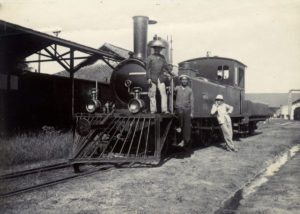
One of the Saigon-Mỹ Tho line’s five SACM Belfort 4-4-0T “locomotives à grande vitesse” stands at Saigon Depot in the early 1900s
The first half of the talk traces the growth of the Vietnamese rail network, starting with the very first railway lines from Saigon to Mỹ Tho (1885) and from Phủ Lạng Thương (Bắc Giang) to Lạng Sơn (1894), and continuing through the construction of the Transindochinois (North-South line), which was opened in five successive stages between 1905 and 1936.
It examines French attempts to build lines of exploitation into southern China via Lào Cai and Đồng Đăng, and also looks at the abortive 1920s scheme for an “Interior rail route” through the Mekong valley, of which only the extraordinary rail-and-cable-car connection from Tân Ấp to Xóm Cục and Ban Na Phao (see The Railway which Became an Aerial Tramway) and the so-called “Rubber Line” from Saigon to Lộc Ninh (see Saigon’s Rubber Line) were actually achieved.
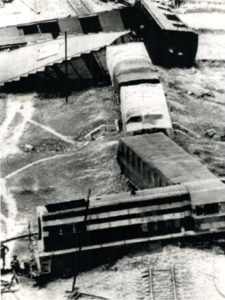
One of over 960 sabotage incidents on the South Vietnamese railway network in 1965
It also considers the repeated failure of the French to connect Phnom Penh with Saigon, the “missing link” which, when eventually completed, will link Singapore, Kuala Lumpur and Bangkok directly with Beijing, Moscow and Europe.
The second half of the talk examines the devastating effect on the railway network of more than three decades of war, beginning with Allied bombing during the later years of Japanese occupation (1943-1944), and continuing with the catastrophic damage inflicted during the First and Second Indochina Wars (1945-1975).
The talk assesses the impact of war on the rail network both in the North (Democratic Republic of Việt Nam) and in the South (Republic of Việt Nam).
It brings the story up to date by looking at the gradual reconstruction and development of the rail network which took place after 1975.
The talk concludes with a brief overview of recent plans to develop a modern twin-track electrified standard gauge railway, linked not just to China but also to Laos, Cambodia, Malaysia and Thailand.
To book any of these talks, please contact Tim Doling at tim.doling@historicvietnam.com

